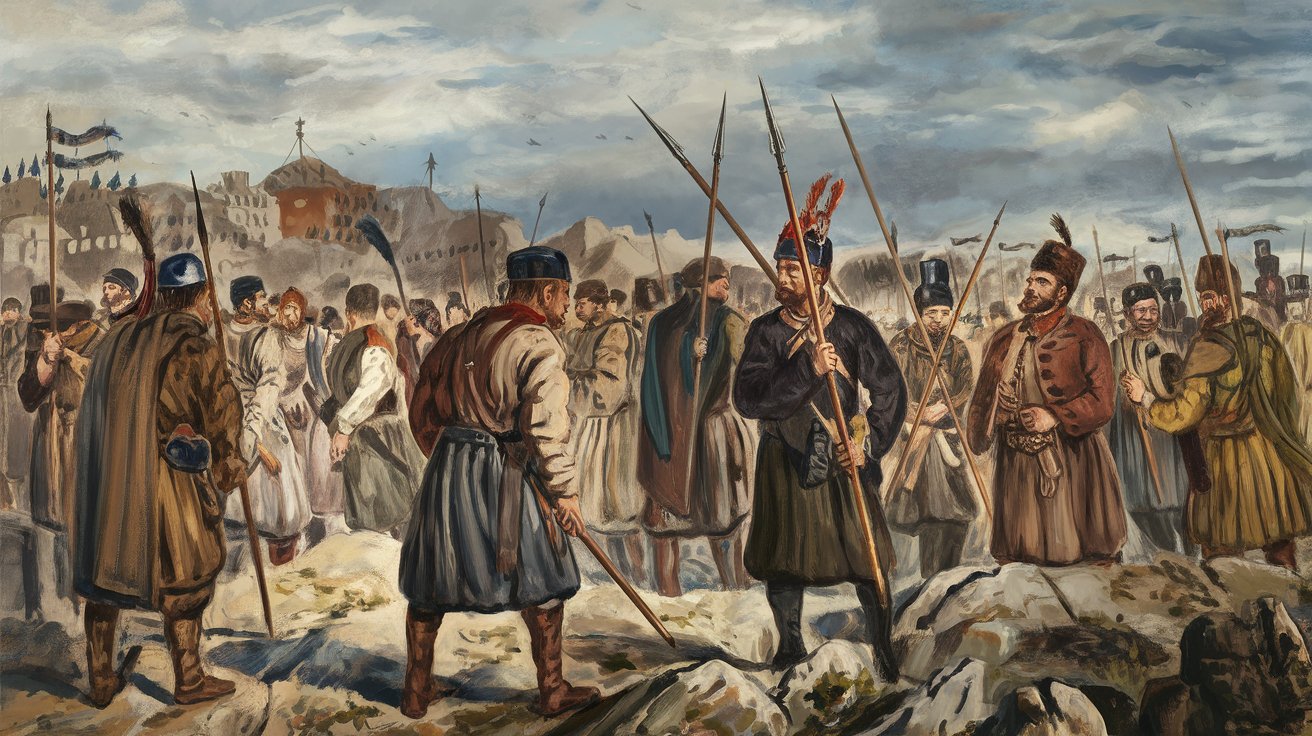
What was the Mandor Rebellion? The Mandor Rebellion was a significant uprising in the early 19th century in West Kalimantan, Indonesia. It began in 1822 and lasted until 1824, involving the local Dayak and Malay communities against the Dutch colonial forces. The conflict arose due to oppressive colonial policies, heavy taxation, and forced labor. The rebellion was led by Datu Patinggi, a prominent local leader who united various ethnic groups to resist Dutch control. Although the rebellion was eventually suppressed, it highlighted the growing discontent among the indigenous population and set the stage for future resistance movements against colonial rule.
Key Takeaways:
- The Mandor Rebellion was a short but intense uprising in Indonesia, led by the Dayak people and Chinese immigrants against oppressive Dutch colonial policies, leaving a lasting legacy of resistance and resilience.
- The rebellion was fueled by heavy taxes, forced labor, and cultural differences, with rebels initially achieving victories through guerrilla warfare tactics in the dense forests of Borneo, but ultimately being outnumbered and outgunned by Dutch forces.
What Was the Mandor Rebellion?
The Mandor Rebellion was a significant uprising in the history of Indonesia. It took place in the early 19th century and involved the local Dayak people and Chinese immigrants. Here are some intriguing facts about this historical event.
-
The Mandor Rebellion occurred in West Kalimantan, Indonesia, primarily around the town of Mandor.
-
The conflict started in 1884 and lasted until 1885, making it a relatively short but intense period of unrest.
-
The rebellion was primarily a reaction to the oppressive policies of the Dutch colonial government.
-
The Dayak people, indigenous to Borneo, played a crucial role in the uprising.
-
Chinese immigrants, who had settled in the area for mining and trade, also joined the rebellion.
Key Figures in the Mandor Rebellion
Several important leaders emerged during the Mandor Rebellion. Their actions and decisions shaped the course of the conflict.
-
Loo Kiauw Yok was a prominent Chinese leader who played a significant role in organizing the rebellion.
-
Panglima Burung, a Dayak leader, was instrumental in rallying the indigenous people to fight against the Dutch.
-
The Dutch colonial forces were led by Major General van der Heijden, who was tasked with suppressing the rebellion.
-
Many local chiefs and village leaders also participated, providing crucial support and resources.
-
The collaboration between Dayak and Chinese leaders was a unique aspect of this rebellion.
Causes of the Mandor Rebellion
Understanding the reasons behind the Mandor Rebellion helps to grasp the broader context of colonial resistance in Indonesia.
-
The Dutch imposed heavy taxes on the local population, causing widespread discontent.
-
Forced labor policies implemented by the Dutch further fueled anger among the Dayak and Chinese communities.
-
The exploitation of natural resources by the Dutch, particularly gold mining, led to environmental degradation and economic hardship.
-
Cultural and religious differences between the Dutch and the local population also contributed to tensions.
-
The desire for autonomy and self-governance was a driving force behind the rebellion.
The Course of the Rebellion
The Mandor Rebellion saw several key battles and strategic moves by both the rebels and the Dutch forces.
-
The rebels initially achieved several victories, capturing key Dutch outposts.
-
The Dutch responded with a series of military campaigns to regain control.
-
Guerrilla warfare tactics were employed by the rebels, making it difficult for the Dutch to suppress the uprising.
-
The dense forests of Borneo provided a natural advantage to the Dayak fighters.
-
Despite their efforts, the rebels were eventually outnumbered and outgunned by the Dutch forces.
Aftermath and Legacy
The Mandor Rebellion had lasting impacts on the region and its people, influencing future resistance movements.
-
The rebellion was ultimately crushed by the Dutch in 1885, but it left a lasting legacy of resistance.
-
Many of the leaders and participants were executed or imprisoned by the Dutch authorities.
-
The rebellion highlighted the resilience and determination of the Dayak and Chinese communities.
-
It also exposed the harsh realities of Dutch colonial rule, garnering sympathy and support for the rebels.
-
The Mandor Rebellion is remembered today as a symbol of the struggle for freedom and justice in Indonesia.
Final Thoughts on the Mandor Rebellion
The Mandor Rebellion stands as a significant chapter in Indonesian history. It showcased the resilience and determination of the local people against colonial forces. This uprising wasn't just a fight for land but a battle for identity, culture, and freedom. The rebellion's leaders, with their strategic prowess, left an indelible mark on the region's history. Understanding these events helps us appreciate the complexities of colonial resistance and the enduring spirit of those who fought for their rights. The Mandor Rebellion reminds us that history is filled with stories of courage and sacrifice. By learning about these events, we gain a deeper appreciation for the struggles that shaped our world today. So, next time you think about historical uprisings, remember the bravery and determination of those involved in the Mandor Rebellion. Their legacy continues to inspire and educate future generations.
Frequently Asked Questions
Was this page helpful?
Our commitment to delivering trustworthy and engaging content is at the heart of what we do. Each fact on our site is contributed by real users like you, bringing a wealth of diverse insights and information. To ensure the highest standards of accuracy and reliability, our dedicated editors meticulously review each submission. This process guarantees that the facts we share are not only fascinating but also credible. Trust in our commitment to quality and authenticity as you explore and learn with us.
